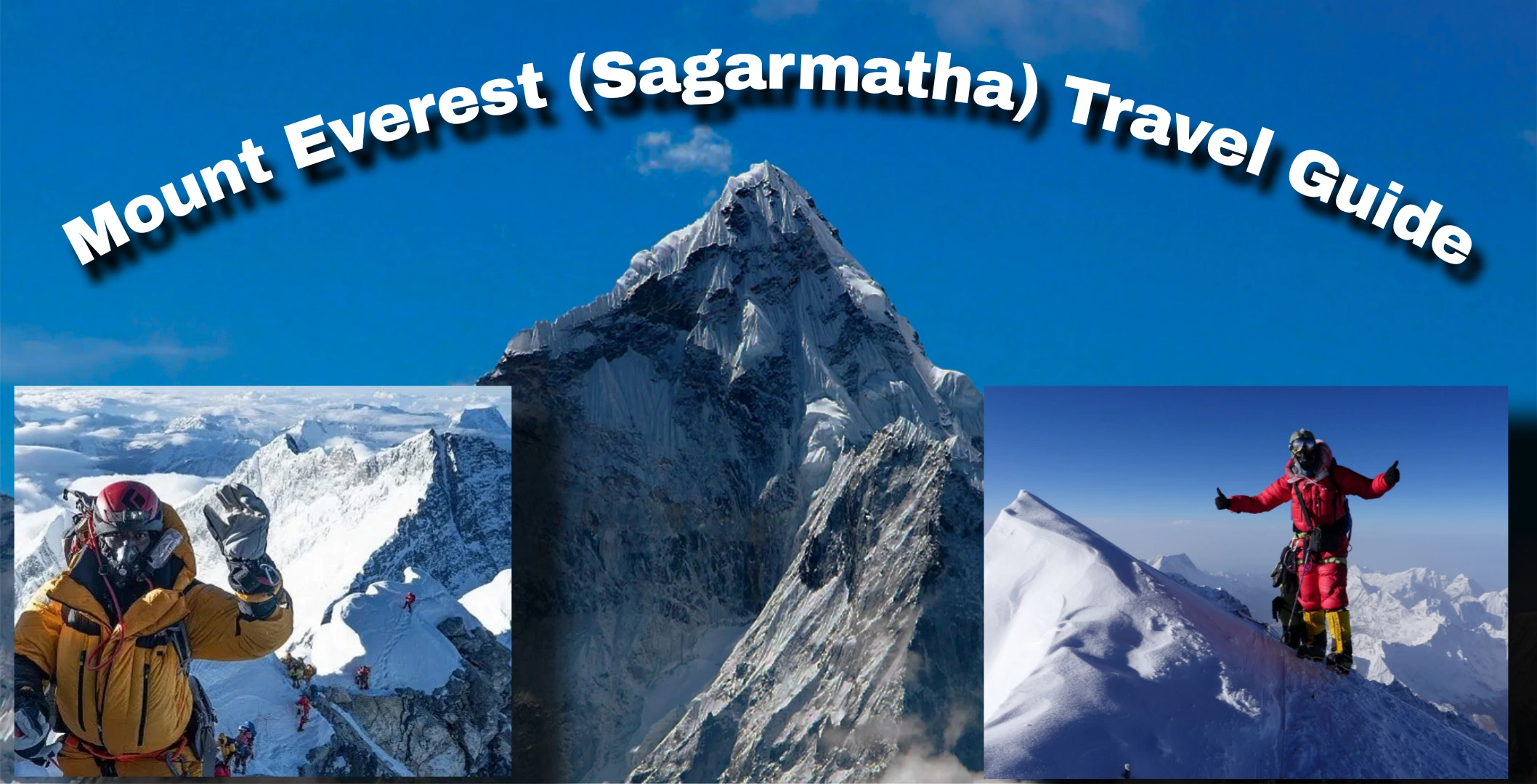Introducation
Table of Contents
Mount Everest (Sagarmatha) Travel Guide. Standing tall at 8,848.86 meters, Mount Everest, also known as Sagarmatha in Nepali and Chomolungma in Tibetan, is the highest mountain in the world. Nestled in the Mahalangur Himal sub-range of the Himalayas, Everest is more than just a peak—it’s a dream, a challenge, and a symbol of Earth’s raw power and beauty. Whether you’re planning to climb, trek, or just experience the majesty of the mountain, this 2025 guide will help you explore it smartly and safely.
Why Visit Mount Everest in 2025?
Eco-tourism improvements: New sustainable practices are making travel to Everest cleaner and safer.
Better infrastructure: Enhanced trails, lodges, and communication systems.
Cultural richness: Meet Sherpas and explore ancient monasteries in the Everest region.
Bucket-list achievement: A dream destination for trekkers, climbers, and nature lovers.
Top Amazing Ways to Experience Mount Everest
1. Everest Base Camp Trek (EBC)
- Duration: 12–14 days
- Starting Point: Lukla (accessible by flight from Kathmandu)
- Highlights: Namche Bazaar, Tengboche Monastery, Kala Patthar viewpoint
- Best Time: March–May & September–November
2. Everest Scenic Flight
- Duration: 1 hour
- From: Kathmandu domestic Airport
- best for: Tourists who want to see Everest without trekking
3. Climbing to the Summit
- Requires: High-altitude training, permits, sherpas, and professional support
- Best Months: April–May
- cost: $30,000–$80,000 (approx.)
Permits & Regulations (2025)
- Sagarmatha National Park Permit – NPR 3,000(25)
- Khumbu Pasang Lhamu Rural Municipality Permit – NPR 2,000(15)
- TIMS Card( For pedestrians only) – NPR 2,000(15)
- Climbing Permit( For peak attempt) –$ 11,000 USD
What to Pack
- Down jacket, thermals, gloves, trekking boots
- Water purification tablets
- Diamox (for altitude sickness)
- Power banks and local SIM
- First-aid kit
Tip: Pack light but be weather-ready—temperatures can drop to -20°C near base camp.
Cultural Tips for Visitors
- Greet with “Namaste”
- Respect prayer flags and monasteries
- Avoid plastic litter—carry waste back
- Listen to Sherpa guides and locals
Where to Stay
- Teahouses in villages like Phakding, Namche, and Gorak Shep
- Hotels in Lukla and Namche (for slightly better facilities)
- Camping (for climbers and customized tours
Health & Safety Tips
- Acclimatize properly – don’t rush the trek
- Stay hydrated and eat well
- Carry insurance that covers emergency helicopter evacuation
- Beware of signs of Acute Mountain Sickness (AMS)
Fun Facts About Mount Everest
- First summited by Sir Edmund Hillary and Tenzing Norgay in 1953.
- Grows about 4 mm each year due to tectonic activity.
- Known as “The Third Pole” because of its icy terrain
Best Ways to Experience Everest
The most popular way to explore Mount Everest is through the Everest Base Camp (EBC) Trek, which takes around 12–14 days starting from Lukla. The journey includes iconic places like Namche Bazaar, Tengboche Monastery, and the breathtaking Kala Patthar viewpoint. For those who prefer a less physically demanding option, scenic mountain flights and helicopter tours from Kathmandu provide incredible aerial views of the Everest range. Climbing to the summit is possible, but only for seasoned climbers with proper training, permits, and Sherpa support.
What to Pack & How to Prepare
Preparing for Everest requires serious planning. Trekkers should carry warm clothing, thermal layers, waterproof gear, trekking boots, a sleeping bag, and altitude sickness medication. Electricity and Wi-Fi are available at some lodges, but charging costs extra, so carrying power banks or solar chargers is helpful. Acclimatization days are important and should never be skipped to avoid altitude sickness.
Cultural and Local Insights
Everest is n’t just about adventure — it’s deeply spiritual. The Sherpa people who inhabit the region are known for their adaptability, hospitality, and spiritual connection to the mountains. Ancient cloisters, fluttering prayer flags, and sacred monuments along the trail add to the spiritual air. trippers are advised to admire original customs, avoid littering, and support original teahouses and attendants.
Conclusion
Mount Everest is not just a mountain—it’s a life-changing adventure. Whether you reach the base camp, fly past it, or summit its peak, the journey to Sagarmatha offers awe, challenge, and inspiration. In 2025, with improved access and sustainable tourism, now is the perfect time to explore the roof of the world.
FAQs About Mount Everest Travel
Q1 Is Everest Base Camp suitable for newcomers?
Yes, if you are fit and follow adaptation guidelines, it’s manageable for first- time pedestrians.
Q2 Can I visit Everest without touring?
Yes, via mountain breakouts or copter tenures from Kathmandu.
Q3 How important does the Everest Base Camp journey cost?
Roughly$ 1,200 –$ 2,000 USD, including attendants, permits, food, and accommodation.
Q4 Is Wi- Fi available during the journey?
Yes, in some teahouses, but it can be slow and costs redundant.
Q5 What’s the stylish time to visit?
Spring( Mar – May) and Afterlife( Sept – Nov) are the stylish seasons for touring and climbing.



